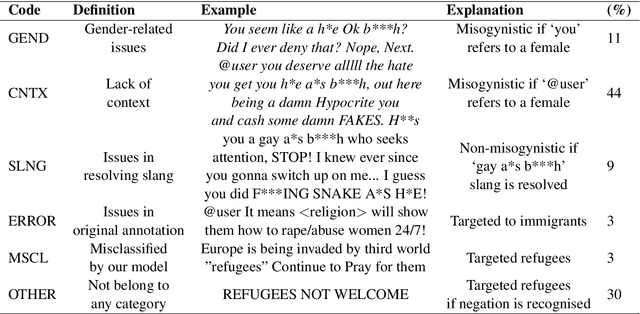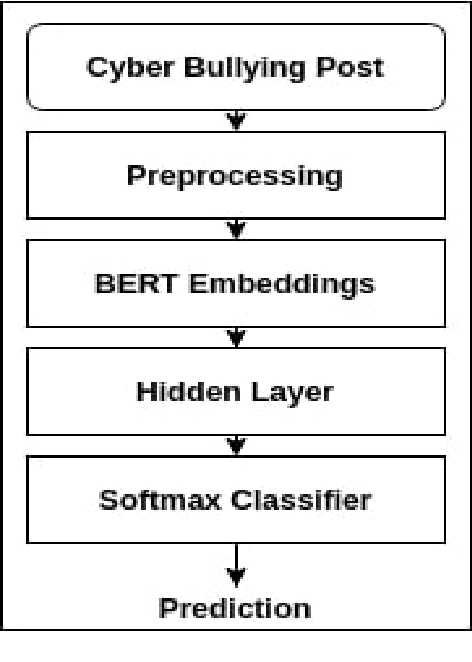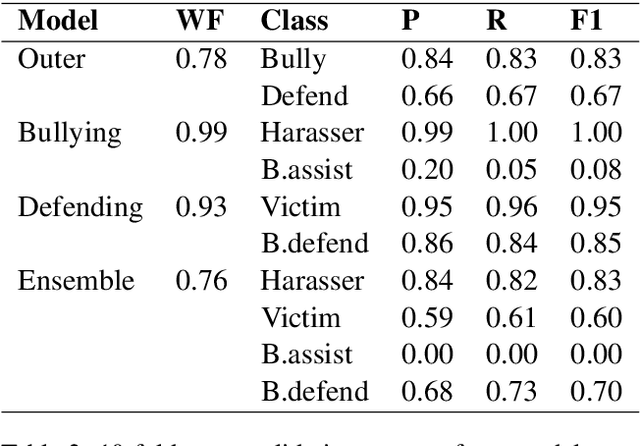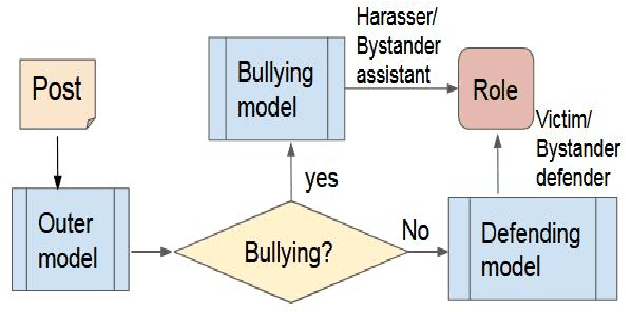Georgia Zhang
Automated Detection of Cyberbullying Against Women and Immigrants and Cross-domain Adaptability
Dec 04, 2020



Abstract:Cyberbullying is a prevalent and growing social problem due to the surge of social media technology usage. Minorities, women, and adolescents are among the common victims of cyberbullying. Despite the advancement of NLP technologies, the automated cyberbullying detection remains challenging. This paper focuses on advancing the technology using state-of-the-art NLP techniques. We use a Twitter dataset from SemEval 2019 - Task 5(HatEval) on hate speech against women and immigrants. Our best performing ensemble model based on DistilBERT has achieved 0.73 and 0.74 of F1 score in the task of classifying hate speech (Task A) and aggressiveness and target (Task B) respectively. We adapt the ensemble model developed for Task A to classify offensive language in external datasets and achieved ~0.7 of F1 score using three benchmark datasets, enabling promising results for cross-domain adaptability. We conduct a qualitative analysis of misclassified tweets to provide insightful recommendations for future cyberbullying research.
Enhancing the Identification of Cyberbullying through Participant Roles
Oct 23, 2020



Abstract:Cyberbullying is a prevalent social problem that inflicts detrimental consequences to the health and safety of victims such as psychological distress, anti-social behaviour, and suicide. The automation of cyberbullying detection is a recent but widely researched problem, with current research having a strong focus on a binary classification of bullying versus non-bullying. This paper proposes a novel approach to enhancing cyberbullying detection through role modeling. We utilise a dataset from ASKfm to perform multi-class classification to detect participant roles (e.g. victim, harasser). Our preliminary results demonstrate promising performance including 0.83 and 0.76 of F1-score for cyberbullying and role classification respectively, outperforming baselines.
 Add to Chrome
Add to Chrome Add to Firefox
Add to Firefox Add to Edge
Add to Edge